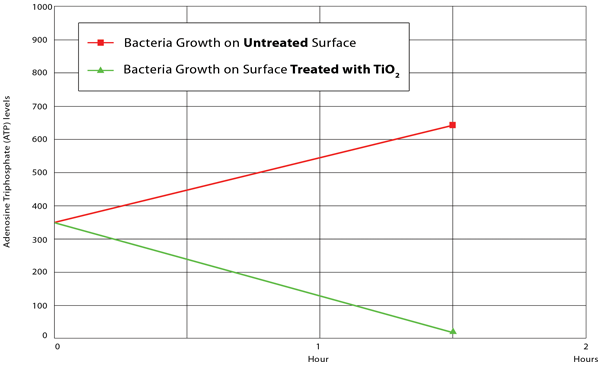Sanitary Verification Reporting for Highly Touched Objects (HTOs)
Getting to know your germs, viruses & microbes:The world is teeming with diverse biological life, humans, animals, plants and microbes. All life has one thing in common, everything is made up of tiny cells. Within every cell of every living thing is a compound called adenosine triphospate (ATP). It is this ATP compound that is present in the cellular residue on Highly Touched Objects that allows PureActive to measure and quantify the precise sanitary condition of key surfaces like doorknobs, handrails, armchairs, desk and other HTOs.
Utilizing a scientific device called an ATP (adenosine triphosphate) detector, we reveal the presence of any organic material and quantify the precise sanitary condition of your home or facility. A reading of 0-10 is considered sterile; a reading of 11-30 is sanitary.
TEST RESULTS: Micro-organism Control

Adenosine Triphosphate (ATP) is a measurement of the biological residue on a surface. The levels represent varying sanitary conditions. An ATP reading of 30 or below is considered sanitary, 10 and below is considered sterile. It is important to note that the reading of the TiO2 treated sample measured an ATP average level of 21.

Be it in a health care facility, public gym or locker room, school, public facility, office or house, the deadly COVID-19 virus is being spread through common contact surfaces. A PureLife™ monthly TiO2 treatment of HTOs is beneficial in reducing the spread of germs and viruses like:
Bacteria
Escherichia coliSalmonella typhimurium
Staphylococcus aereus (MRSA)
Pseudomonas stutzeri
Pseudomonas aeruginosa
Seratia marcescens
Staphylococcus mutans
Staphylococcus rattus
Staphylococcus sobrinus
Clostridium perfringes spores
Lactobacillus acidophilus
Streptococcus cricetus
Actinomyces viscosus
Bascillas pumilus
Bacillis subtilis
Viruses
H1N1 (swine flu)Phage Q
Phage MS-2
Poliovirus 1
Lactobacillus phage PL-1
SARS-Co-V-2
Yeast & Fungi
Saccharomyces cerevisiaeCandida albicans
Hyphomonas polymorpha
